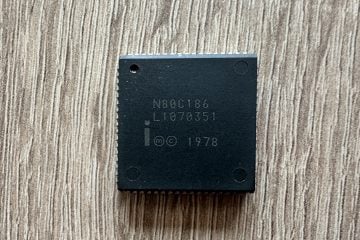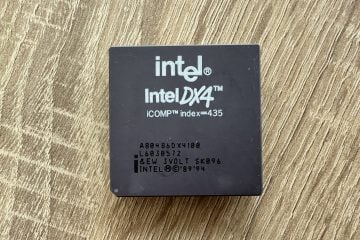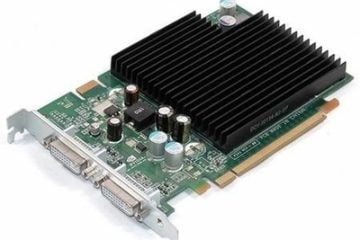Atari Megafile 30
External Hard Drive for Atari ST/TT
Introduction: c. 1987 | Discontinued: Early 1990s | Device Type: External hard disk unit for Atari ST-family computers
The Megafile 30 added fast, fixed-disk storage to the ST ecosystem via Atari’s ACSI (Atari Computer System Interface), a SCSI-like DMA bus available on most ST models.
Key Specifications
| Formatted Capacity | ~32,747,520 bytes (≈30 MB) |
|---|---|
| Interface | ACSI (Atari DMA port) via 19-pin D-sub (DB-19) |
| Typical Internal Drive | 3.5″ SCSI HDD (Seagate ST-238R) |
| Controller | Atari Megafile logic w/ SCSI–ACSI bridge |
| Partitioning / FS | TOS/GEMDOS; classic TOS supports up to 16 MB per partition (use modern drivers for larger logical volumes) |
| Daisy-Chain | Yes — ACSI IN/THRU ports for chaining additional devices |
| Power | Internal PSU (220 V EU region) |
| Cooling | Internal fan |
| Enclosure | Metal chassis with plastic front bezel; ST-matching beige/grey |
| Dimensions / Weight | Desktop external unit; varies slightly by revision (substantial metal chassis) |
| Ports | ACSI IN (DB-19), ACSI THRU (DB-19), IEC C14 mains |
| System Compatibility | 520ST/1040ST/STF/STE, Mega ST/STE, TT030 (via ACSI); also used alongside SLM804 printers in DTP setups |
Note: “30 MB” refers to formatted capacity; raw/mechanical capacity and formatting details vary by drive model.
Inside the Megafile 30
- Drive mechanics: 3.5″ SCSI HDD (Seagate ST-238R). Early units may exhibit age-related stiction.
- Logic board: SCSI–to–ACSI bridge with termination and ID configuration on board.
- Power supply: Linear/switch-mode PSU (region-specific); electrolytic capacitors are common service items after decades.
- Cooling: Small internal fan; audible at close range and often a wear item.
Performance & Experience
- Throughput: ACSI bus is roughly ~1 MB/s peak under ideal conditions; real-world sustained rates are lower and depend on the specific HDD and driver.
- Seek times: Period-correct mechanisms often advertise ~28–65 ms average seek (model-dependent).
- User impact: Dramatically faster load/save versus floppy disks; common for DTP, MIDI studios, and software development on the ST.
Setup & Configuration
- Place the Megafile 30 and connect mains via the IEC cable.
- Use an ACSI DB-19 cable from the ST’s DMA port to ACSI IN on the Megafile.
- If daisy-chaining, connect the next device to ACSI THRU and ensure only the last device in the chain is terminated.
- Boot the ST; use a hard-disk driver (e.g., AHDI or modern replacements) to partition/initialize. Classic TOS limits partitions to 16 MB; modern drivers can work around this for convenience.
Tip: Keep cables short/quality-made; poor DB-19 cables can cause flaky detection or timeouts.
Maintenance & Common Issues
- PSU recap: Aging electrolytics can cause instability or failure; re-capping and checking the fan are routine restorations.
- Stiction / spin-up trouble: Long-stored drives may not spin up; gentle, professional servicing is recommended to avoid platter damage.
- Noise/heat: Fan bearings and drive whine are normal for the era; replace the fan if bearings chatter.
- Bridge/controller faults: Rare, but ACSI–SCSI logic failures can present as intermittent detection; inspect for cold joints and aging ICs.
Compatibility & Use Today
- Works with most ST-family machines via the DMA/ACSI port.
- Modern alternatives (e.g., ACSI–SD solutions) can clone, back up, or replace the spinning drive while retaining the original enclosure.
- For data rescue, consider imaging the SCSI drive externally (with a period-correct SCSI adapter) or copying via ACSI-to-modern media solutions.
Historical Context & Legacy
The Megafile line (20/30/60) accompanied the Mega ST series and Atari’s push into desktop publishing and MIDI production. Paired with a Mega ST and SLM804 laser printer, the Megafile 30 enabled serious workflows at a fraction of the cost of contemporary Macintosh solutions.
Collector Notes
- Original packaging, clean front bezels, and working original drives increase value.
- DB-19 ACSI cables are collectible in their own right; reproductions exist, but quality varies.
- Current market pricing varies widely by region and condition; non-working units remain valuable as restoration candidates.



0 Comments